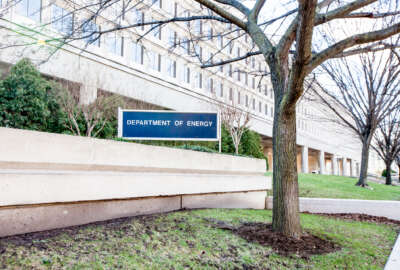ELC 2010: How the RAT Board tags rogue recipients
How the Board keeps tabs on the money and described the tools it uses to identify rogue recipients is explained by Doug Hassebrock, the assistant director of...
wfedstaff | June 3, 2015 4:02 pm
By Jamie Blanco
Digital News Writer
FederalNewsRadio.com
The success the Recovery Accountability and Transparency Board has had in tracking hundreds of billions of dollars in Recovery Act awards has become a national model. RAT Board assistant director of investigations, Doug Hassebrock, told Federal News Radio the methods used for the tracking are also proving helpful in identifying fraud and keeping the number of Recovery recipients in non-compliance to a minimum.
“You’re talking about [non-compliance] cases that number in the hundreds. That’s actually been very low to date,” said Hassebrock who oversees the work of 29 other inspectors general across multiple agencies.
Hassebrock spoke with Federal News Radio’s Tom Temin at the 2010 Executive Leadership Conference.
The far more sinister risk, Hassebrock said, comes from those contractors planning on defrauding the program. So in order to fight back, the RAT Board has implemented a three tier approach, utilizing its IT technology, to “prevent and reduce fraud.”
Hassebrock explained the process:
- Screening – “First of all, we screen using a weighted business model…For example, let’s look at your history of financial audits, your bankruptcies, your past criminal behaviors, tax liens. Things that might make you risky just by the very nature of getting money itself.”
- Analysis – “Once I establish certain folks that we’re going to take a look at and certain companies, we start to pull apart the relationships that they have with one another to identify and look for non-obvious linkages between certain entities. For example, you might be a person that’s debarred from getting federal funds but you get a front company and you get money through that pass through. And that’s the things we’re looking for.”
- Geospatial Mapping – “Lastly, we look at the entire country in the area of risk…Where have we had risky areas in the past? Where our recovery money is going now. And we correlate that with where we are getting the most hotline calls from.”
Hassebrock told Federal News Radio that using this method produces an “absolute pattern” of where a program is most at risk. That information then makes its way into the hands of the inspectors general and the Department of Justice.
Hassebrock said the RAT Board also has had great success with the “Report Fraud and Abuse” button on every page of its website. He said the data collected goes into a centralized database where 26 other agencies also combine their information.
“Now we have agencies that are combining their data upfront so that I know that if I get a complaint against company ‘A’, that if company ‘A’ has been involved in other malfeasance somewhere else, I’ll know because the other agencies will [let me know],” Hassebrock says. “So I save time, I save effort, I save upfront coordination and again we get that into the hands of all the parties that are involved.”
According to Hassebrock, non-compliance with the Recovery Act is very similar to the waste and abuse from normal federal programs because the avenues of spending have not necessarily changed. The most common complaint – misappropriation of funds.
Hassebrock said he hopes that other entities can come away with better tools and ideas for fighting waste and fraud from the RAT Board model.
“We don’t proclaim to have the solutions to everyone’s problems, but you can see an actual IT solution being used real-time and see if it works for your agency. And I think that’s going to be one of the great benefits.”
Copyright © 2025 Federal News Network. All rights reserved. This website is not intended for users located within the European Economic Area.





